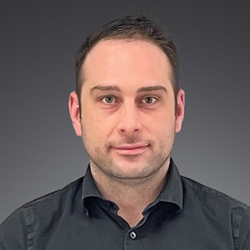Predicting Teamwork Performance Using a Large Language Model to Annotate Repair and Grounding Utterances in Task-Based Conversations
Effective teamwork relies heavily on the quality of communication among team members. Conversational dynamics, such as the use of repair and grounding mechanisms—conversational strategies that maintain mutual understanding—play a crucial role in promoting cohesion within a team. Here, we describe an approach that leverages a large language model (LLM) to detect repair and grounding (R&G) utterances during a cooperative task and evaluate how these factors can predict team performance.
To demonstrate this, we collected and analyzed video data from YouTube of the cooperative multiplayer puzzle game Keep Talking and Nobody Explodes. Player communication was transcribed using speech-to-text tools to generate speaker-labeled transcripts. Utterances were labeled for R&G mechanisms by an LLM using few-shot learning. Statistical analyses reveal distinct patterns in communication between successful and unsuccessful bomb defusal trials, which enabled the development of a model to predict task outcome.
- Year: 2025
- Category: Artificial Intelligence
- Tag: Large Language Models, LLMs, Natural Language Processing, NLP, Artificial Intelligence, AI, Machine Learning, ML, Communication Analysis, Team Communication, Team Performance Prediction, Task Performance Prediction, AI for Collaboration, AI for Teamwork, High-stakes Environments, Teamwork Assessment
- Author: Akshitha Kartigueyan, Joseph P. Salisbury
- Released: IEEE SoutheastCon 2025
Featured Riverside Research Author(s)
Joseph P. Salisbury
Dr. Joseph Salisbury is a neuroscientist (Ph.D., Brandeis University, 2013) and software developer whose current research focuses on human-computer interaction, human-robot interaction, and applications of large language models.
LinkedIN
The above listed authors are current or former employees of Riverside Research. Authors affiliated with other institutions are listed on the full paper. It is the responsibility of the author to list material disclosures in each paper, where applicable – they are not listed here. This academic papers directory is published in accordance with federal guidance to make public and available academic research funded by the federal government.
